Plant Anatomy: Inflorescence, Fruit, Roots
0.0(0)
0.0(0)
New
Card Sorting
1/28
There's no tags or description
Looks like no tags are added yet.
Study Analytics
Name | Mastery | Learn | Test | Matching | Spaced |
|---|
No study sessions yet.
29 Terms
1
New cards

PERIANTH
The calyx and corolla.
2
New cards
CALYX
Sepals.
3
New cards
COROLLA
Petals.
4
New cards
ANDROECIUM
Male reproductive structure.
5
New cards
GYNOECIUM
Female reproductive structure.
6
New cards
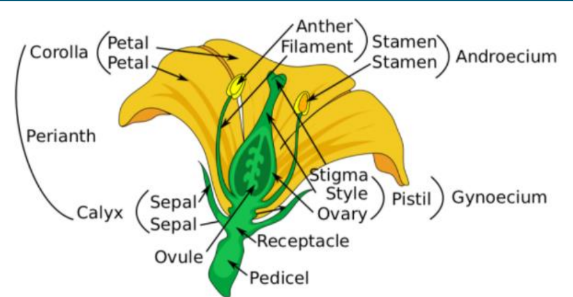
PARTS OF A FLOWER
Most important parts of a flower.
7
New cards
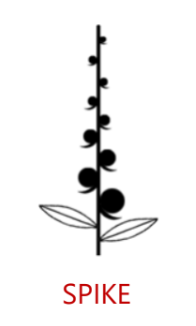
SPIKE
Flowers are sessile along a simple undivided axis or rachis. Sessile = no stalk, lacking petiole (leaves) or peduncle.
8
New cards
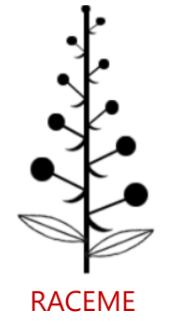
RACEME
Similar to a spike but the flowers are pedicelled.
9
New cards
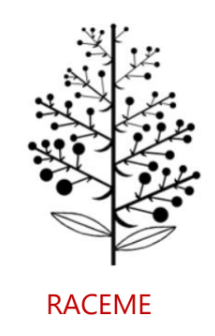
PANICLE
Branched raceme.
10
New cards
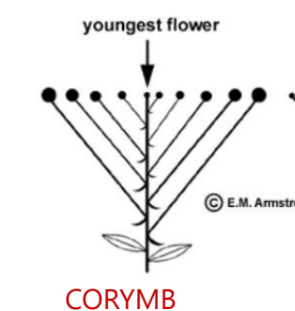
CORYMB
Youngest flower at the top center, with a flat or nearly flat top.
11
New cards
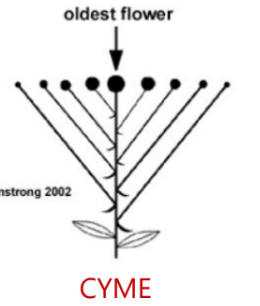
CYME
Similar to corymb but the inner flower opens first; oldest flower in the inner part. Oldest flower terminates the main axis.
12
New cards
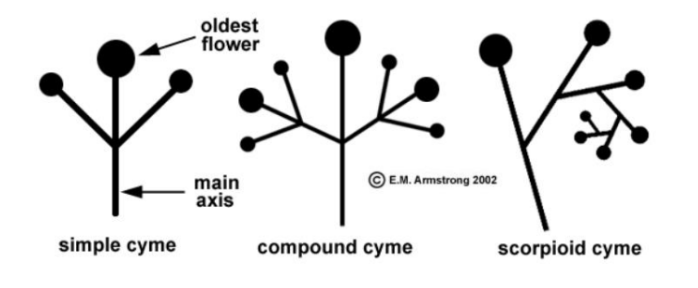
SCORPIOID CYME
One-sided branching forming a coiled inflorescence, typical to Boraginaceae.
13
New cards
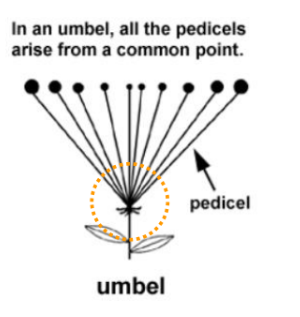
UMBEL
All pedicels arise from a common point.
14
New cards
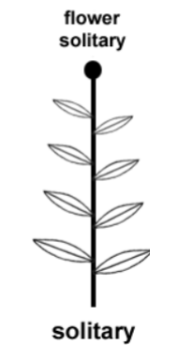
SOLITARY
Flower is solitary.
15
New cards

CATKIN
Short or long, usually dense, scaly spike.
16
New cards
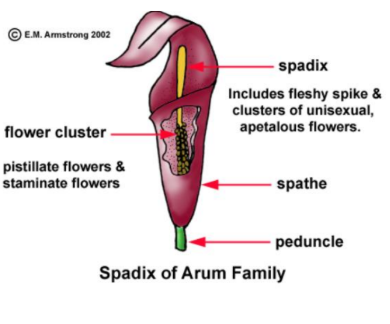
SPADIX
Dry fleshy spike with small flowers, commonly surrounded by an enveloping organ called the spathe.
17
New cards
FLESHY FRUITS
All or most of the ovary wall (pericarp) is soft or fleshy at maturity.
18
New cards
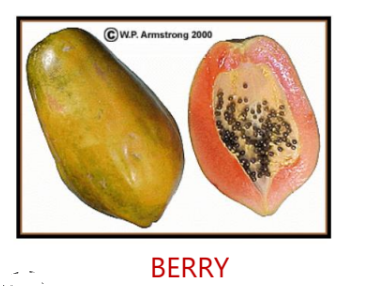
BERRY
Entire pericarp is fleshy, although skin is sometimes tough; may be one- or many-seeded. Examples: grape, tomato, papaya, pomegranate.
19
New cards
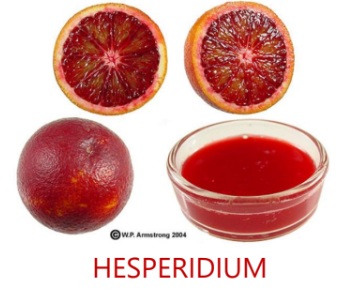
HESPERIDIUM
Berry with a leathery rind and parchment-like partitions between sections; typical fruit of the citrus family (Rutaceae). Examples: orange, lemon, grapefruit.
20
New cards
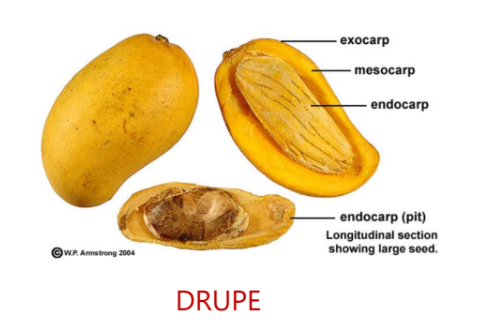
DRUPE
Fleshy fruit with a hard inner layer (endocarp or stone) surrounding the seed. Examples: peach, mango. The coconut is considered a dry drupe with a green, waterproof outer layer.
21
New cards
DRY FRUITS
Pericarp dry at maturity.
22
New cards
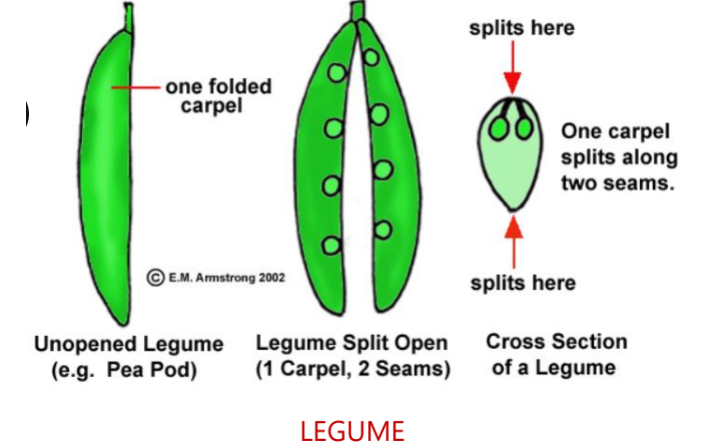
LEGUME / POD
An elongate “bean pod” splitting along two seams; typical fruit of the legume family (Leguminosae or Fabaceae). Dehiscent: pericarp splits open along definite seams.
23
New cards
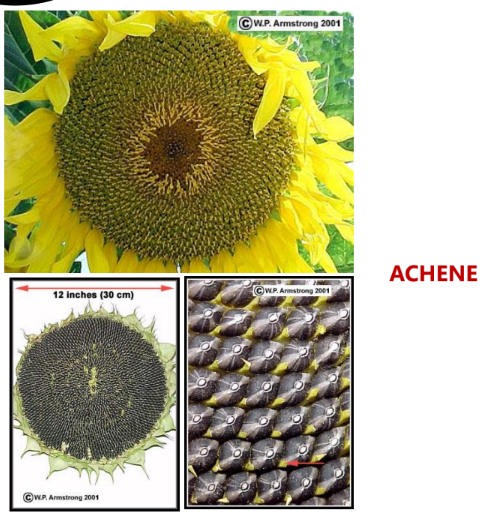
ACHENE
Very small, one-seeded fruit, usually produced in clusters. At maturity the pericarp is dry. Typical fruit of the sunflower family (Compositae or Asteraceae).
24
New cards
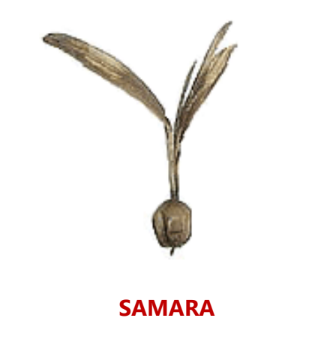
SAMARA
Small, winged, one-seeded fruit, usually produced in clusters on trees. The samaras spin as they sail through the air, aiding dispersal.
25
New cards
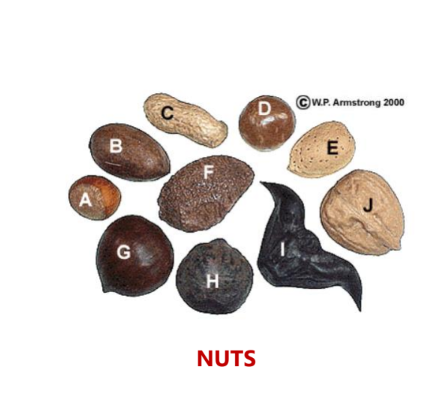
NUT
Larger, one-seeded fruit with very hard pericarp, usually enclosed in a husk. Many so-called nuts are actually “false nuts” (drupes or dry drupes), where the hard inner layer (endocarp) bears the seed.
26
New cards
ROOT MODIFICATIONS
Roots that are modified for special functions such as support or storage.
27
New cards
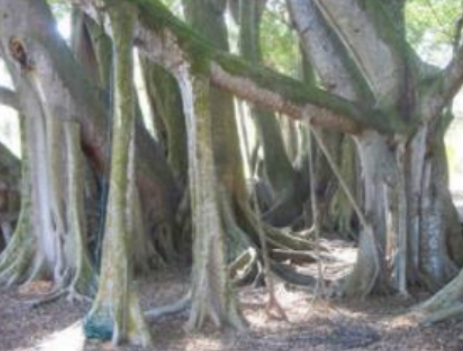
AERIAL ROOTS
Encompass a variety of shapes, functioning primarily as structural support for the plant.
28
New cards
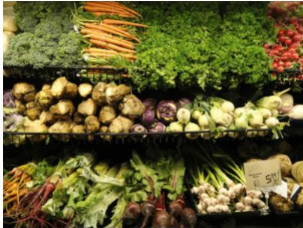
STORAGE ROOTS
Specially modified roots for storage of starch and water; many edible vegetables fall under this type.
29
New cards
EPIPHYTE
A plant that grows on another, using it only as physical support, without taking nutrients or causing harm (and offering no benefit).